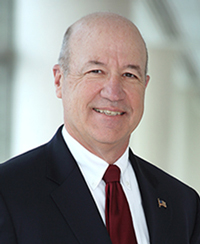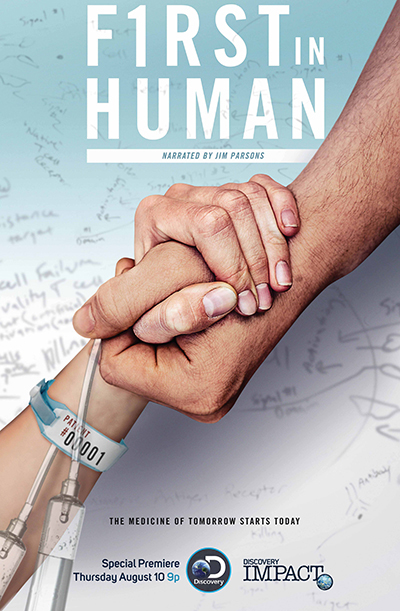
On the 65th Anniversary of this "House of Hope," the NIH Clinical Center Embraces Change and Supports Landmark Clinical Research

CEO, NIH Clinical Center
As I proudly navigate my third year as the Clinical Center's (CC) first Chief Executive Officer, I offer this strategic plan as a reflection on the cultural transformation underway in the CC and with the promise of exciting changes ahead. The year 2018 marked the 65th Anniversary of the opening of the Clinical Center. But it also marks an inflection point for the "House of Hope" as we continue the transition to a high reliability clinical research organization ensuring the best achievable patient outcomes.
In those three years since beginning the journey, we've introduced significant changes to governance of the Clinical Center (separating the oversight of clinical research science from the CEO's oversight of operational and hospital administrative management); established a new CC Mission and strategic aims; revised our Guiding Principles; and integrated a new CC Research Hospital Board (CCRHB). The CC organizational chart (Appendix 1) supports the new governance model. These changes have been grounded in an unwavering commitment by the CC workforce to fortifying a culture and practice of safety and quality.
Ten years before the CC opened, Public Law 78-410 authorized the Public Health Service Act (July 1, 1944), to establish the Clinical Center (https://go.usa.gov/xmMZt). Historically, the CC has been (and continues to be) the site of many clinical breakthroughs in areas such as chemotherapy for the treatment of cancer, antiretroviral therapy for patients infected with human immunodeficiency virus (HIV), the management of patients with Ebola, and a multitude of other scientific discoveries and accomplishments (Appendix 2).
From the first patient admission in 1953, the CC continues to be the "House of Hope" for those afflicted with rare and refractory diseases as well as diseases of national and/or international significance. About 1,600 clinical research studies are under way at any given time at the CC, most of them sponsored by the Institutes and Centers (ICs) at NIH. These different ICs study disorders such as cancer, acquired immunodeficiency syndrome (AIDS), heart conditions, eye problems, dental issues, depression, and nerve diseases, to name just a few. For all of the studies, the CC provides the resources required to implement safe, cutting-edge clinical research. Discoveries made at the CC have influenced biomedical science and public health processes throughout the prior 65 years. These successes are well chronicled, including on these CC websites: https://go.usa.gov/xmMK2, https://go.usa.gov/xmMKb.
 In 2017, a documentary produced by the Discovery channel titled, First in Human, showcased the powerful real-life experiences of doctors, researchers, staff, patients and their caregivers in the CC. The three-episode series was filmed over the course of a year (https://go.usa.gov/xmMKK). The series title, First in Human, captures the essence of the CC. Since its beginning, the CC has served as a global leader in the conduct of Phase 1 clinical research trials, which is the first stage of research testing in humans. The CC has specialized resources and infrastructure to support such studies. Indeed, many of the great scientific discoveries made at the CC began as first-in-human Phase 1 trials.
In 2017, a documentary produced by the Discovery channel titled, First in Human, showcased the powerful real-life experiences of doctors, researchers, staff, patients and their caregivers in the CC. The three-episode series was filmed over the course of a year (https://go.usa.gov/xmMKK). The series title, First in Human, captures the essence of the CC. Since its beginning, the CC has served as a global leader in the conduct of Phase 1 clinical research trials, which is the first stage of research testing in humans. The CC has specialized resources and infrastructure to support such studies. Indeed, many of the great scientific discoveries made at the CC began as first-in-human Phase 1 trials.
Our strategic plan is titled "The NIH Clinical Center at 65: People, Places, and Capabilities." It reveals efforts by all key CC stakeholders to bring the safety of patients, who are our partners in research, into the forefront of our complex medical landscape. We also want to ensure that patient safety and clinical quality receive as much focus as our efforts to advance clinical science. While there is no room for complacency as we continue to develop the culture of patient safety, the CC staff is just as proud now of our patient safety metrics and outcomes as we are of the research results that are presented and published around the globe. This strategic plan is written during a period of great progress in medical science. Advances in understanding cell biology and genomics, accompanied by advances in the techniques of cellular engineering, including gene editing, allow fulfillment of a portion of the promise of Precision Medicine – creating a therapy specific to an individual. These techniques are as applicable to rare and hard to treat diseases as to more common conditions.
- Continuing to lead the world in conducting first-in-human clinical research while maintaining our focus on rare and refractory diseases
- Increasing the use of the CC by the NIH intramural research program while simultaneously accelerating the CC's status as a national resource for the extramural community
- Demonstrating profound respect for our patients, whom we recognize as our full partners in the clinical research enterprise
- Partnering with the ICs to recruit, develop, and retain the next generation of great NIH clinical researchers and the CC staff that will support their efforts
As this plan is written, significant changes are also occurring in the operational healthcare environment. Complementary and integrative health approaches, such as meditation and natural products, are now entering the mainstream of medicine as traditional means of dealing with problems, such as pain, have failed to provide benefits that outweigh risks. Wearable technologies that record massive amounts of data and transmit the data wirelessly to processors capable of storing and analyzing these data will drive new community-based research efforts long into the future. Finally, migration from a care delivery model focused on illness to one focused on health is a generational change that will mature in the near future.
This planning effort identified four main aims that will serve as guideposts to our priorities in the next five plus years. The priorities described in this plan were established in alignment with how NIH sets its research priorities. With our IC colleagues, resources are identified (including clinical staff, equipment, facilities, and infrastructure) to provide safe delivery of patient-centric care in support of scientific research aligned with public health needs. The influence of the Mission, Guiding Principles and aims permeate this strategic plan and serve as a foundation to leverage the CC's future.
Since its inception, the CC has provided the collaborative environment for outstanding scientists, dedicated clinicians, and patients and their families to work together, regardless of the patient's ability to pay. That principle will not change. The following pages describe a renewal of dedication to the safety and satisfaction of our patient-partners, sustained by the clinical research mission that will continue unabated as we find and develop the people, build the facilities, and integrate the capabilities that will enable superior clinical research at the CC for the next decade.
This plan is the culmination of extensive input from all key CC stakeholders: the CC Governing Board and the CCRHB; NIH-wide leaders including IC Directors, Scientific and Clinical Directors; NIH scientists, clinicians, and administrators; extramural collaborators; CC and IC staff; visitors, and our partners in research, our patients. CC and IC leaders participated in 7 planning sessions over the course of one year to process the abundant stakeholder input, and identified priorities to share with all readers of this plan. Gratitude is given for the direction and thoughtful contributions of so many individuals who have made our recent accomplishments a reality and our future plans possible.
- James K. Gilman, MD,
CEO, NIH Clinical Center
July 2019

